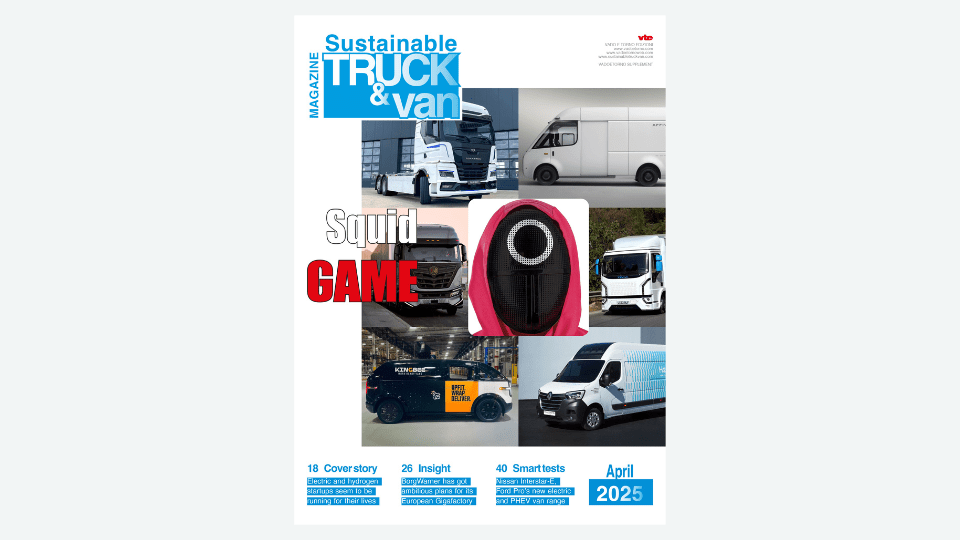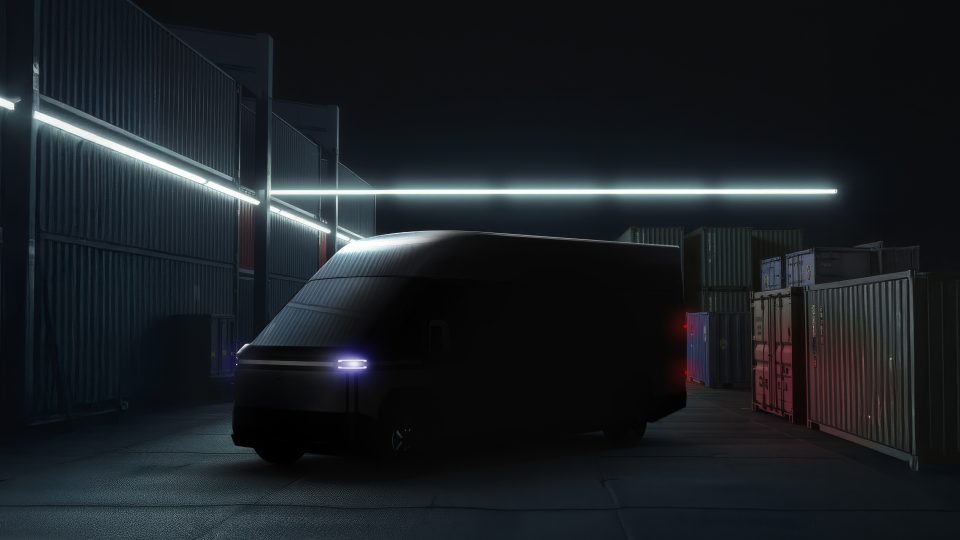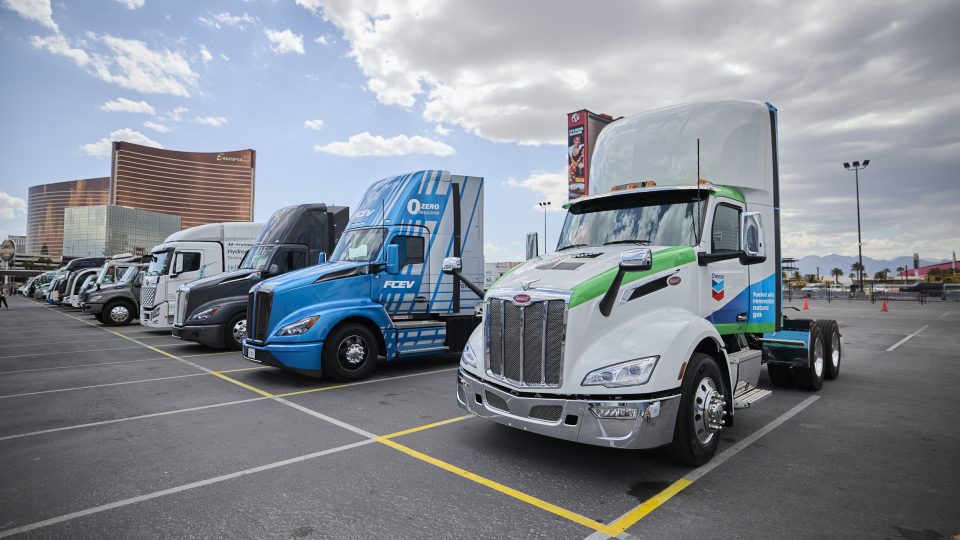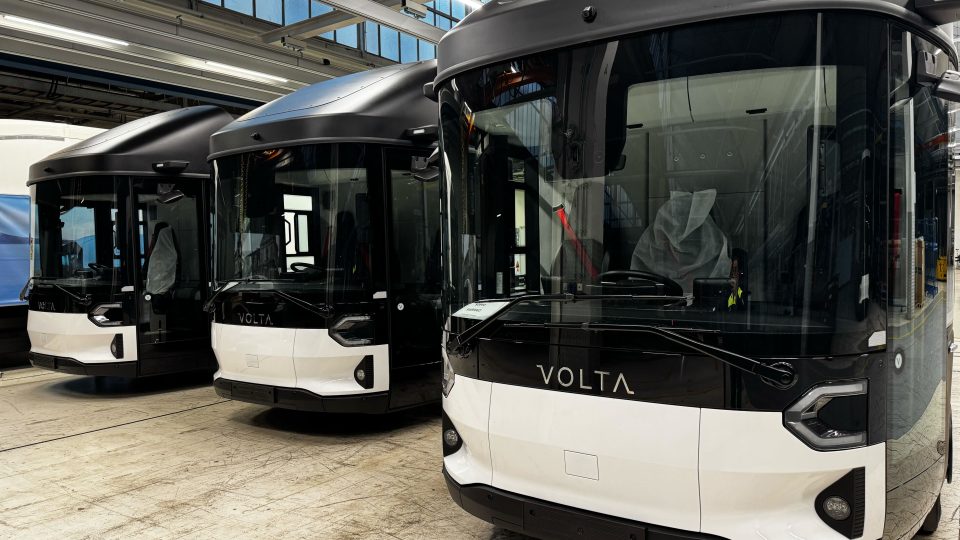The fuel agnostic engine at the heart of the concept truck. Our interview with Cummins’ management at IAA
The next generation 15-litre and 10-litre displacement X Series is designed to accelerate the decarbonization of heavy-duty, long-haul truck fleets while able to meet proposed ultra-low emission levels, including Euro VII regulations expected to take effect in 2027.
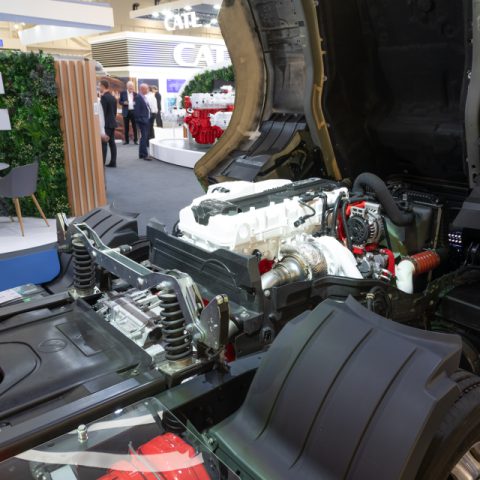
At IAA Transportation, we could at least see Cummins’ fuel agnostic engine platform, announced a few months ago and truly paving the way to the future of engines for on-road applications. The idea behind the X-Series platform is rather clear: Cummins designed a “neutral” (that’s the meaning behind fuel agnostic) engine platform, capable to adjust to traditional fuels, such as diesel, or rather natural gas, biofuels and, last but not least, hydrogen. The next generation 15-litre and 10-litre displacement X Series is designed to accelerate the decarbonization of heavy-duty, long-haul truck fleets while able to meet proposed ultra-low emission levels, including Euro VII regulations expected to take effect in 2027.
Customers do not compare diesel with zero-carbon technology. Customers who want to move from diesel, they know they have three choices: battery electric, fuel cells or hydrogen engines. In such a scenario, hydrogen engines look very attractive, because they are diesel-like, they require the same amount of space
Jim Nebergall, General Manager – Hydrogen Engines, Cummins
Fuel agnostic engine: the architecture
The architecture of the 15-litre X Series utilizes a common base engine with cylinder heads and fuel systems specifically tailored for the X15H to use carbon-free hydrogen and for the X15N to use biogas with up to 90 percent carbon reduction (output up to 530 hp). These engines are ideally suited for trucks up to 44-ton gross vehicle weight. The X15 advanced diesel can use either sustainable HVO fuel or B100 biodiesel with ratings up to 650 hp (485 kW) for the most demanding heavy haul duty-cycles. At the same time, the next generation X10 diesel engine with up to 450 hp output is thought for vehicles across the 26-to-44 ton GVW range, as well as low-cab trucks for urban operations.
Besides, in Hannover, Cummins showcased a concept truck equipped with a hydrogen fuel agnostic internal combustion engine. A visual proof of what may happen in the future of commercial vehicles. Right in front of this truly interesting vehicle, we met Jim Nebergall, General Manager – Hydrogen Engines; Duncan Engeham, Director – Research and Technology Europe and Jens Hüttner, Sales Director Europe. Our chat started from the truck and went on talking about its ‘revolutionary’ heart, the engine.
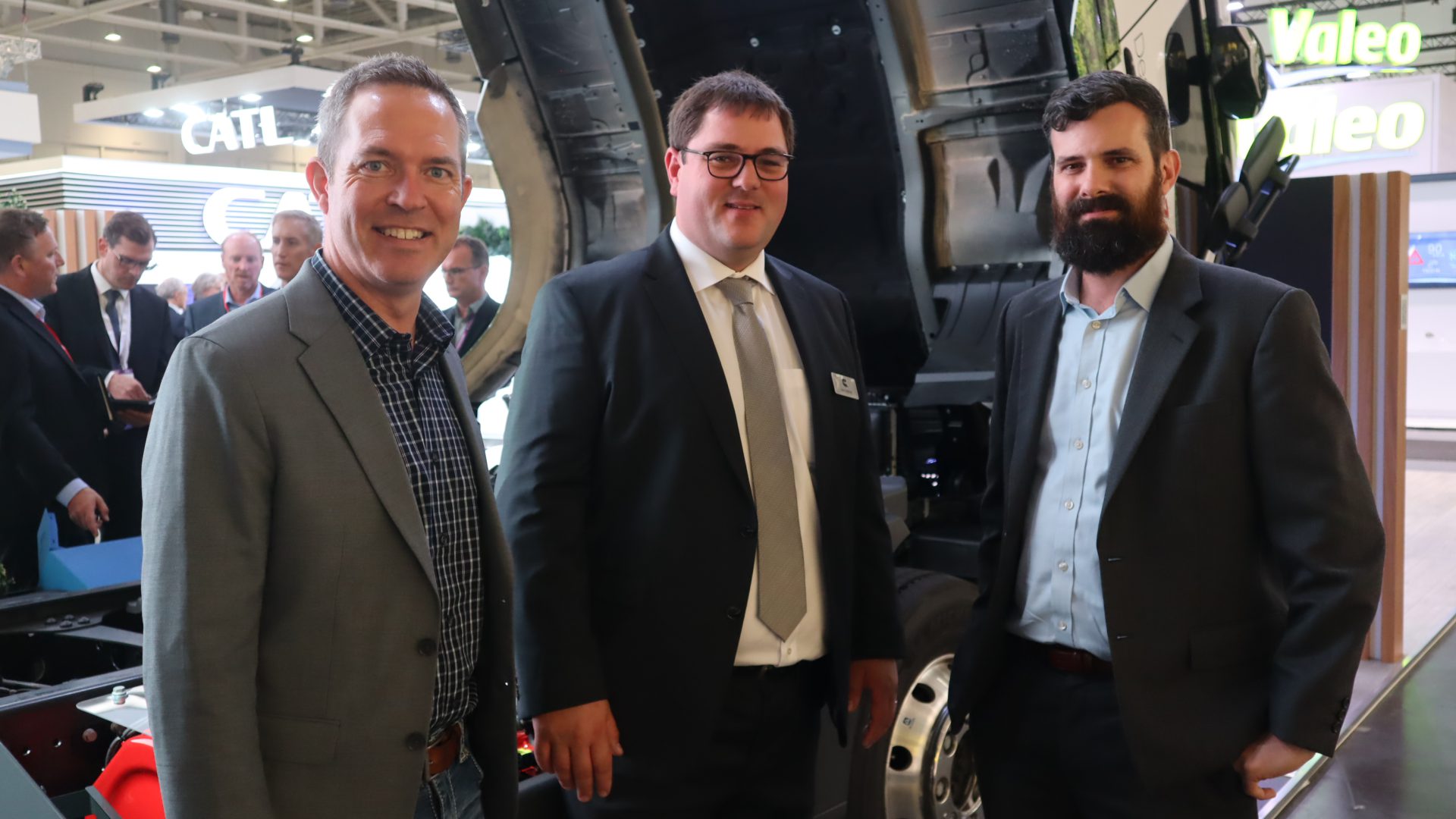
The hydrogen-powered truck concept
What is the main goal of the hydrogen truck concept we could see at IAA?
Hüttner: “The truck conversion took about six months to convert it from a diesel truck to a hydrogen truck, which is remarkably quick, as the entire driveline was converted. The truck has 290 hp power, 40 kg hydrogen storage at 700 bars, which is good for a range of approximately 500 km.
We keep the same performances of a diesel truck, with the same payload, so we don’t have any penalty on the truck weight. We also have the same cargo space. We can say there’s no penalty going into zero carbon. Also, from a drivability perspective, it’s the same compared to a diesel truck.
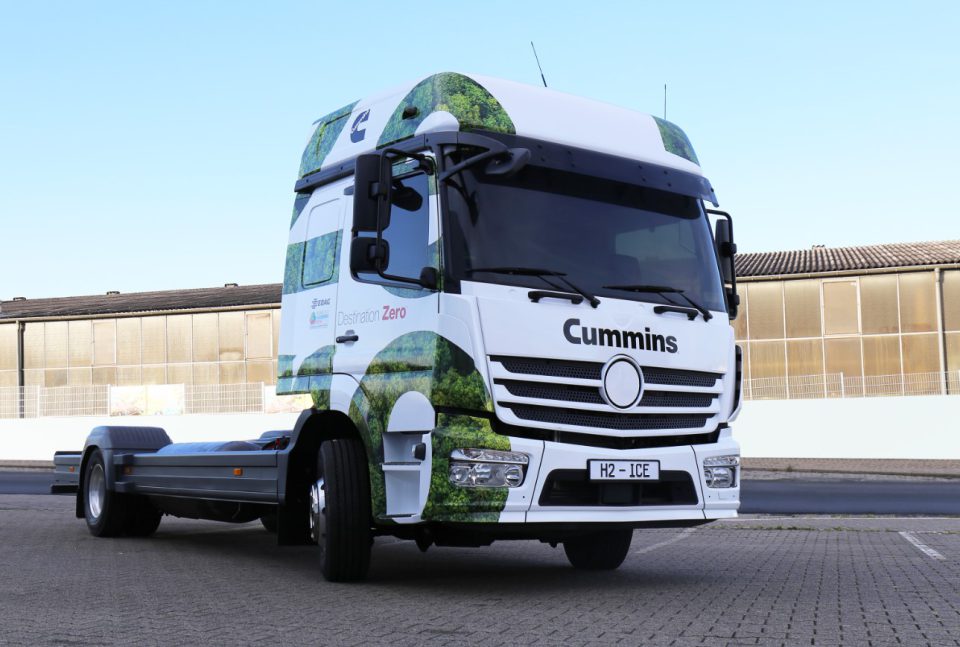
If you look at the installation, we took the Daimler engine out, but we kept the Daimler transmission in. the radiator too, stayed in as well. We just took the diesel engine out and put the hydrogen engine in. On the side of the truck we have no intrusion into the space of the upfitter and we were able to locate the hydrogen tanks. We wanted to keep the same structure of the original truck. Even the electronics, it’s the same of a diesel engine.
On this medium-duty truck segment, the TCO is highly impacted by the cost of the vehicle itself, not so much by the fuel cost, as the number of kilometers is significantly lower compared to long-haul trucks”.
Hydrogen ICE, the B6.7. Which ‘color shade of hydrogen’ goes best with: brown, grey, blue…?
Nebergall: “We might say the engine doesn’t know what color of hydrogen it is burning. Ideally, from the carbon reduction perspective, green hydrogen is the best solution, and we’ll see more of it over time, mainly due to the high investments that major countries are carrying out”.
How is the 6.7 litre engine different from the diesel version, both on road and High Performance?
Engeham: “The bottom part of the engine is exactly the same compared to a diesel engine. The bottom half is conceived to be an agnostic engine. We did not make any compromise when we designed the engine. From a combustion point of view, we know very well the features of the diesel engine. When it comes to hydrogen, or even natural gas, we needed a much more spark-ignited design”.
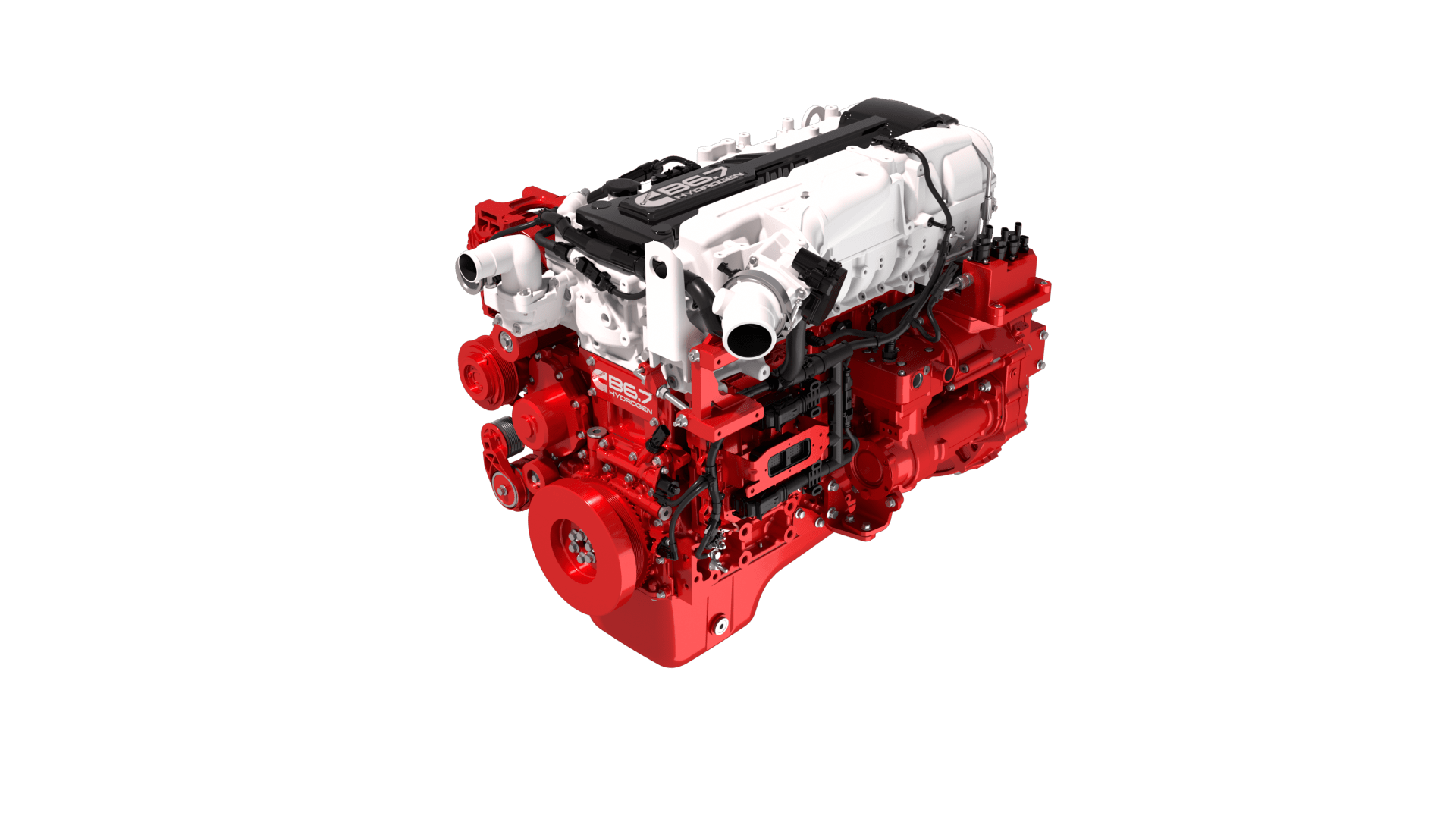
What’s in the engine space: EGR, DPF, SCR…
Besides EGR, does it allow you to get rid of the burden of DPF and SCR?
Nebergall: “I think it depends on the emissions regulations we are dealing with. One of the big discussions we’ve been having here is about Euro 7: where the PM number ends up on Euro 7 regulations will make a difference on having DPF or not. The engine itself is exceptionally clean and wouldn’t need DPF out of the box, but if the PM number goes down in the regulations we may need it for urea, for the SCR system. It can also depend on the area of the world where the engine is used”.
What safety systems for a 700-bar cryogenic tank?
Nebergall: “I think it’s a logical question, people often ask about safety. What I like to remind is that we’ve had natural gas-powered vehicles on the road for more than 20 years and these are using the same technology. Those high-pressure tanks have been around for quite a long time. These tanks are quite thicker, and their technology is well-established also in terms of test protocols they have to stand. We can follow all the expertise we have gained from natural gas so far. Of course, there are certification protocols and so on”.
If you look at the installation, we took the Daimler engine out, but we kept the Daimler transmission in. the radiator too, stayed in as well. We just took the diesel engine out and put the hydrogen engine in. on the side of the truck we have no intrusion into the space of the upfitter and we were able to locate the hydrogen tanks
Jens Hüttner, Sales Director Europe, Cummins
Are the power and torque curve the same as diesel? And what about power density?
Engeham: “The engine is slightly lower on power compared to a diesel engine. If you think about the X15 fuel agnostic engine we’ve got on display here, it can go up to 650 hp, we’re more like 530 hp for the hydrogen version. It’s comparable to natural gas, maybe slightly better than that.
The truth is that most OEMs require more like 530 hp, they don’t need higher power”.
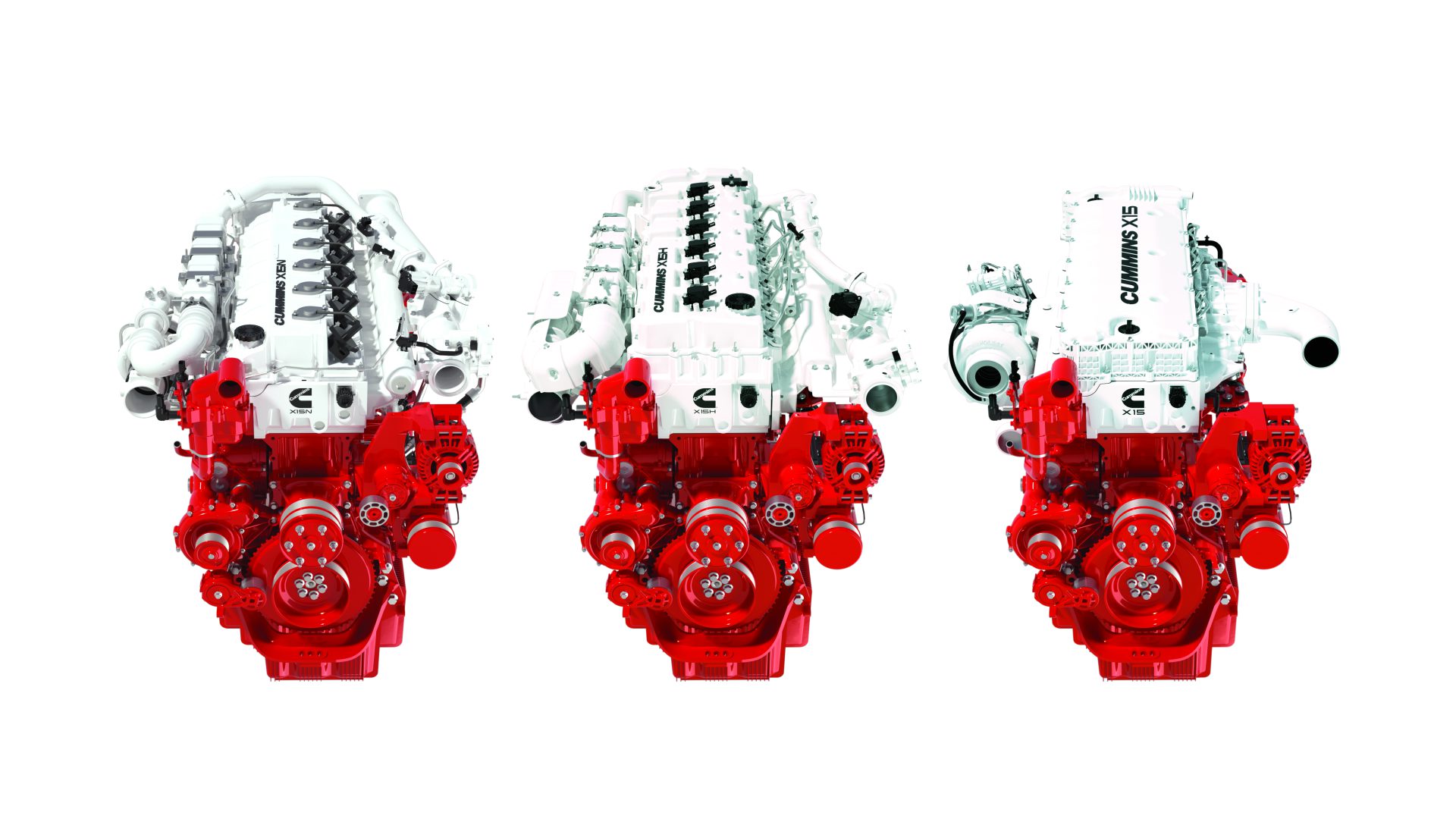
Possible truck applications
For multi-drop distribution haulage, this engine seems to be a good solution. But, if it is tricky to apply full-electric technology on a 26-tonne truck, isn’t a range of only 500 km still too restrictive?
Nebergall: “Our point is: if a diesel engine can do the job, then hydrogen engines can work as well. The hydrogen engine does a great job, especially with extreme duty cycles, extreme conditions: cold, dusty, dirty environments it’s just like a diesel engine. Our tests have been quite successful so far.
From a TCO perspective, it’s hard to beat diesel, which is low cost, available everywhere, fuel efficient and so on.
Customers do not compare diesel with zero-carbon technology. Customers who want to move from diesel, they know they have three choices: battery electric, fuel cells or hydrogen engines. In such a scenario, hydrogen engines look very attractive, because they are diesel-like, they require the same amount of space”.
Are you currently working with European truck manufacturers in the development of hydrogen-related projects? Could you mention some of them?
Nebergall: “We’re getting a lot of customer interest in our technology. We’re working in general with OEMs but we don’t have anything we’re able to announce yet. We have signed some letters of intent so far”.
Do you believe in retrofitting? How unwilling are truckers to switch away from diesel engines?
Engeham: “It can be the same transmission, the same cooling pack, the same engine mounts. You only need a new fuel system. The great thing with the fuel agnostic engine platform is that we’re talking about the same engines, the same components”.



